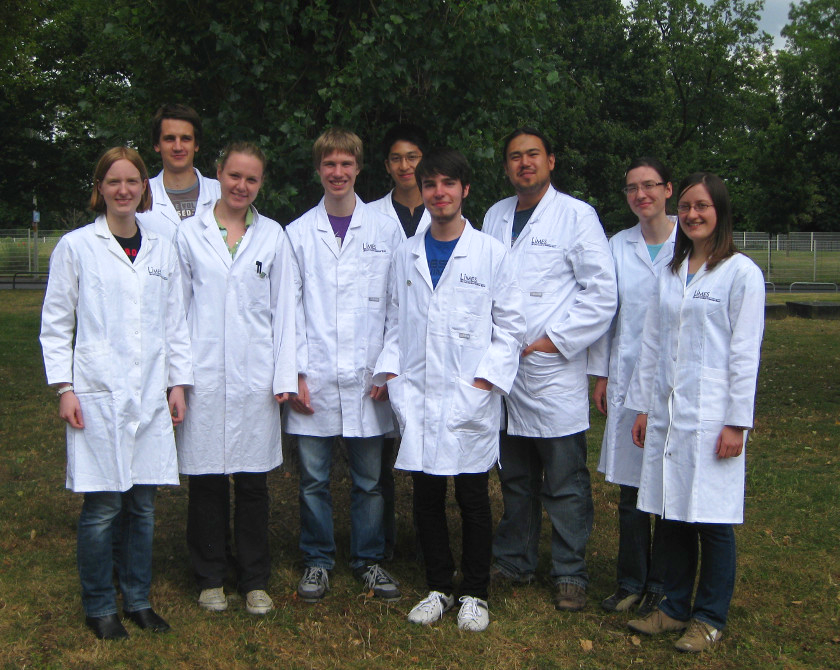Team:Bonn
From 2012.igem.org
| Line 5: | Line 5: | ||
{|align="justify" | {|align="justify" | ||
| - | | | + | | |
|[[Image:Bonn_logo.png|200px|right|frame]] | |[[Image:Bonn_logo.png|200px|right|frame]] | ||
|- | |- | ||
| | | | ||
| - | + | Fusion protein design has always been time- and design-intensive, to say the least. We are developing and characterizing a fusion construct containing a light sensitive domain, providing easy coupling and light activation of proteins of interest to investigators, thus developing a protein-level light-induced knockout. | |
| + | |||
| + | |||
| + | Using the LOV (Light, Oxygen, Voltage) domain commonly found in plants, where it enables light-directed growth, we are establishing guidelines for coupling proteins of interest to the LOV domain, which allows control of protein activity through blue wavelength light. Designing our reversible knockout at the protein level allows quick response times (2,2 microseconds activation time, 85 seconds deactivation time). | ||
|[[Image:Bonn_team.png|right|frame|Your team picture]] | |[[Image:Bonn_team.png|right|frame|Your team picture]] | ||
|- | |- | ||
Revision as of 10:44, 6 July 2012
This page is currently under construction.
To visit our website at University of Bonn click [http://igem12.uni-bonn.de/en/ HERE].
File:Bonn logo.png 200px | |
|
Fusion protein design has always been time- and design-intensive, to say the least. We are developing and characterizing a fusion construct containing a light sensitive domain, providing easy coupling and light activation of proteins of interest to investigators, thus developing a protein-level light-induced knockout.
| |
| Team Bonn |
| Home | Team | Official Team Profile | Project | Parts Submitted to the Registry | Modeling | Notebook | Safety | Attributions | Sponsors |
|---|
 "
"
